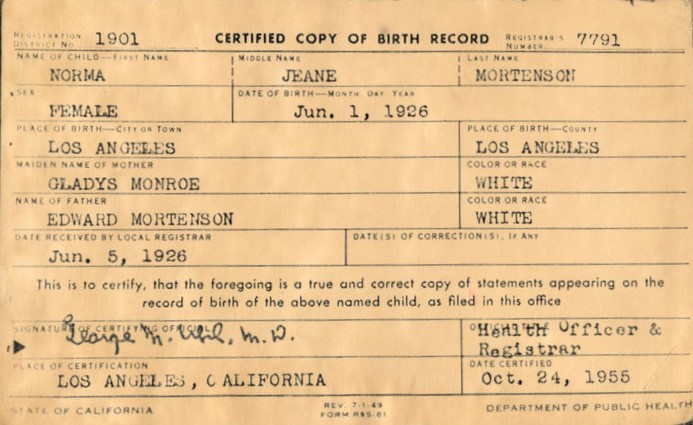
The commercialized Halloween holiday in the United States reminds us of costume parties, spooks, goblins, spiders’ webs, witches, skeletons and cemeteries. Usually shortly after Halloween, countries all over the world – from Germany to Sweden to Latin American countries’ Dia de los Muertos – celebrate ancestors’ lives with multiple-day events, many religious in nature. Some end with beautiful candlelight ceremonies in cemeteries and a spiritual, heartfelt recognition of the people (and in some cases, animals!) preceding us. Chicago’s Graceland Cemetery, meanwhile, offers up to seven tours a day around Halloween because the cemetery “residents” are the plutocrats of a bygone era – builders of the Pinkerton Detectives, department store mogul Marshall Field, meat packer Philip Armour, and the noted industrialist George Pullman, among many others.
How to Find Ancestors’ Final Resting Places
The cemetery tours remind us that we often need to make cemetery tours of our own via the web, in person, or through books, to learn about where our ancestors were interred and about any other facts – many fascinating - related to their deaths.Crowd-sourced web sites such as Find A Grave, BillionGraves, and Internment.net are growing, and they often lead us to our ancestors’ graves because nearly 80 per cent of ancestors were buried in family plots of some kind. Since the information derived at those web sites is often user generated (and not from official sources, in many cases), we will want to verify and expand upon the information. Photographs of the graves found there are invaluable. Genealogybank, a fee-based site, also has more than 247 million obituaries and death notices to search.In America especially, laws regarding cemeteries have varied widely by state and over time. Some cemeteries are municipal. Others are church related, involving death records that are not publicly available, but that may be sought. Some are also military or individual family cemeteries, many overgrown, in rural areas. The records for the smaller, rural cemeteries are harder to find. Some may be found in local historical associations or library collections, or even in USGenWeb listings such as this one. The lineage organization, Daughters of the American Revolution, often made cemetery censuses, too, for historic cemeteries in designated locations. These records are increasingly online.Still can’t find an ancestor’s resting place or death record? Let’s remember that ancestors were not always buried where they died, as some had to be transported back to final resting places. Familysearch.org has catalog listings for “Manhattan bodies in transit, 1859-1894,” for example. This collection included Civil War soldiers, and Abraham Lincoln being transported back to Illinois after his assassination. If we have an obituary that lists a funeral home that oversaw ancestors’ services, we can sometimes find the old records related to the funeral home or contact the facility if it is still operating. Both funeral homes and some cemeteries may provide additional unknown details about an ancestor. Lake View Cemetery in Jamestown, New York, keeps death certificates of those interred there. It’s not the only one.
Are Cemetery Visits the Next Step?After locating an ancestor’s resting place, it is sometimes very satisfying to visit a cemetery. Before visiting, take care to determine the hours for cemetery visits, and whether there is a cemetery office that may assist or provide an online map. (Get the map ahead of a visit, if possible. Though you may know that your ancestor was interred in “Section 1” on the map, some cemeteries do not mark clearly in the cemetery itself where “Section 1” is.) Also, use Google Maps to look at the cemetery location and try to determine if it is easily accessible. Some small cemeteries are so far back in wooded areas that they require all-terrain vehicles to approach! Some cemeteries (often beside churches) are not open to the public, and some religions discourage entry into cemeteries by those of other faiths, even to visit. Careful planning is essential for enjoyable, productive cemetery visits. Cemetery rubbings are generally not allowed anymore to clarify hard-to-read stones.
Giving Back: Assisting Ancestor Hunts in Cemeteries
In this era of collaborative genealogy, volunteers are critical in documenting information from cemeteries. Just this October, Find A Grave coordinated a third annual cemetery meet up for October 7-9. Volunteer photographers (membership in Find A Grave is free) in 175 cemeteries worldwide were able to add more than 211,000 new photos and also fulfilled more than 8,000 existing photo requests. With GPS tracking technology, tags may be placed alongside gravestone information, enabling us to find burial places even if helpful cemetery maps don’t exist. This volunteer activity doesn’t have to be done “officially” through Find A Grave. Boy Scout and Girl Scout troops and other organizations are often able to assist with documenting cemeteries locally because of the ability to upload photos (for later documentation, sometimes) immediately from cell phones and tablets. Keep this in mind, too: Many cemeteries offer inexpensive basic “memory stone” purchases for ancestors whose gravestones may have fallen apart or been removed completely over time. You can still honor Uncle Gustaf! As we remember and document carefully the ancestors interred in cemeteries, it may inspire us to see video from an All Saints Day celebration in The Woodland Cemetery in Stockholm as Swedes prepared the candles to honor their loved ones’ memories.




